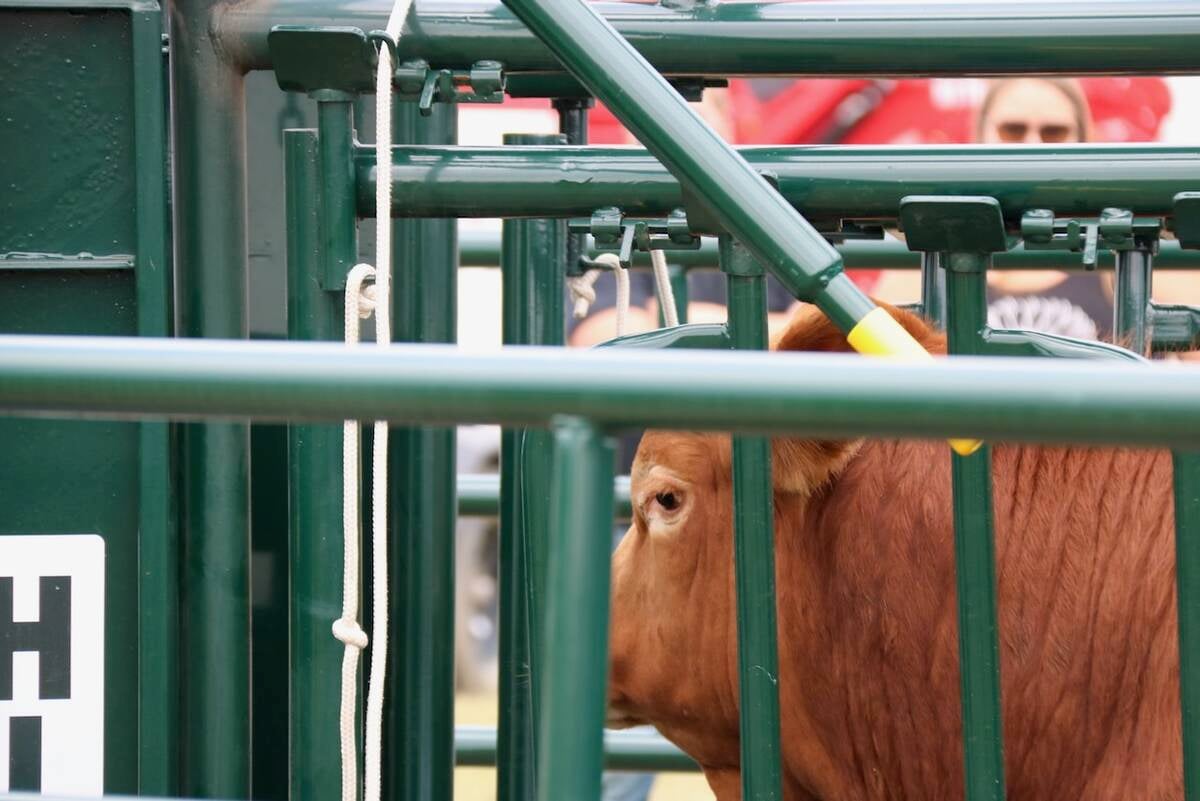CALGARY – Scandals over illegal activities erupted at some major American youth livestock shows in 1994, but incidents have slowed since the laying of fraud charges against 17 professional groomers in Ohio.
Investigations showed seven of the 10 champion animals at the 1994 Ohio State Fair youth show had been tampered with, said Denise Wible of the state agriculture department.
In 1995, all the top-finishing animals sold at the state fair sale of champions were free of illegal drugs.
“The kids were not necessarily the cause of the problem. It was the adult fitter or parents that were so bent on winning, they decided they would help the process by taking extra steps,” said Wible.
Read Also

Good handling equipment a must on cattle operations
It’s important for the safety of producers and everyone else dealing with their stock that handling equipment is functional and safe.
Those extra steps included injecting vegetable oil into muscle tissue to plump it up, beating animals to make muscles swell or injecting illegal growth promotants like clenbuterol.
Following these discoveries, Ohio passed legislation in June 1995 to clean up the show ring.
To date, the government’s ongoing investigation into cheating at the 1994 state fair and county fairs has produced charges against 17 individuals, with 13 convictions, said Wible.
Sentences included jail terms, the longest being 18 months, fines ranging from $2,500 to $7,000, probation of up to five years, community service and banishment from the show ring.
Chat about cheating
Prompted by cases like these at the Ohio, Tulsa and Denver junior stock shows, more than 250 representatives from American fair boards and livestock shows met in Las Vegas Dec. 1 and 2 to discuss cheating in the show ring, said Kay Johnson. Based in Arlington, Va., she represents a livestock care organization known as the Animal Industry Foundation.
Illegal drug use to make steers develop more muscle faster was one of several concerns raised.
While it’s difficult to trace where the drugs come from, some fear it is provided by professional fitters hired to work with youths entered in these shows, said Johnson.
At the conference a broad based code of ethics was written, that has implications for everyone involved in shows including children, professional groomers, fitters, parents and judges.
A follow-up conference will be held in 1996 to track progress of the new, voluntary rules, Johnson said.
For Canadian delegate Susan Kitchen for the Alberta Foundation for Animal Care, the conference emphasized the need for a code of ethics in programs like Canadian 4-H.
The issue of cheating at shows should also extend to adult shows.
“Do we just focus on what’s going on with the kids or do we focus on what’s going on with the whole show circuit misrepresentation of animals?”
At times some of the tricks used to change animals’ appearance becomes a welfare issue and affects the way the public perceives treatment of market animals on display, Kitchen said.
Ted Youck of the Alberta 4-H office said resource material dealing with animal care and show guidelines is being written. The material will be included in all forthcoming project guides for local clubs.















